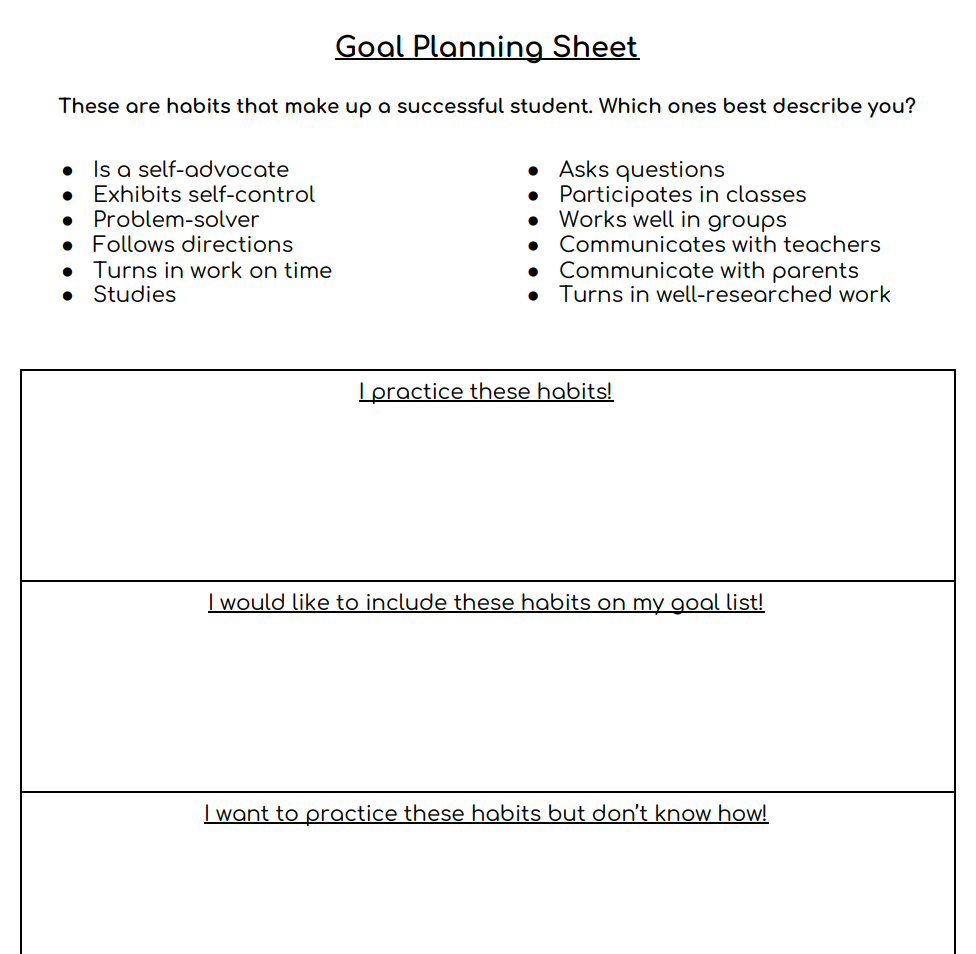Student empowerment in student learning can be such a powerful tool. Often, teachers know that they need to teach content and manage classroom behaviors. However, student choice and student goals are not a focus. During my University of St. Francis course on Assessing and Improving Student Achievement with Technology, I created two artifacts that reminded me of how important it is to help students succeed with portfolios and student self-assessment.

It’s important to reflect on strengths and weaknesses for anyone. For students, it helps them clarify their goals and recognize what they do that is successful and what habits they need to do to practice becoming more productive and effective students in the classroom. Teaching students how to take notes, how to study, and how to research are the basic foundational steps that we can help them climb to achieve better grades on assessments and to communicate their ideas in an effective manner. Even for me, while creating the goals, I had to clarify what I want a student to do in the classroom to gain full potential in my subject area. We can’t just say a good student is a good student because. We have to clearly define goals for students to see their own pathway to success. Furthermore, I think I’m going to create a goal of practices that teachers should be utilizing in the classroom and ask students to rate them on it. I don’t think that should only happen in college. We should be rating teachers so they can improve their lesson plans and offer a variety of learning experiences for students based on student interest.

Furthermore, student portfolios can be used to highlight great work that students are doing and allow them to witness their progression from beginner students in your classroom to more advanced. When parents ask students what they are learning in school, they can easily refer them to their digital portfolio. We can even build a stronger classroom community by having students comment, support, or critique peer work to further improve their products. This would create a collaborative environment where students expect criticism and improve their final products. They are constantly learning through the process, not focusing on the final product to be turned in and forgotten about. Using this knowledge and artifacts, I asked students to create digital portfolios through Google Blogs and it’s been an easy and rewarding experience so far.
